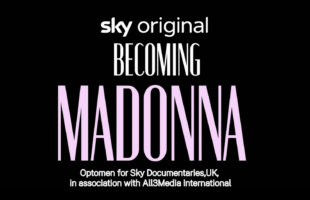In March 2012, the Telecom Regulatory Authority of India (TRAI) released a consultation paper that not just restricts the amount of commercial airtime on Pay and Free-TV, but also determines the way and form advertisements should appear. In the consultation paper entitled “Issues Related to Advertisements in TV Channels,” TRAI made the following stipulations:
Regulation on TV advertising for Free-TV and Pay-TV
Total commercial airtime per hour must not exceed 12 minutes, (with 10 minutes of commercials and up to 2 minutes of in-house channel ads). On reducing the issue of “screen clutter,” TRAI addressed what it calls “part-screen advertisements; Picture-in-Picture (PIP), popups, scrolls, tickers etc.” The regulator calls for a complete ban of such advertisements, only permitting “full-screen advertisements.”
Provisions were allowed for news channels. TRAI says that “in so far as News and Current Affairs channels are concerned, they are allowed to run not more than two scrolls at the bottom of the screen and occupying not more than 10% of the screen space for carrying non-commercial scrolls, tickers etc.”
On the motivation for such action, TRAI cited public complaints that include the “overplaying of advertisements, long duration of advertisements, overlaying of advertisements on the screen, (and) increased audio level during advertisements etc.”
Further restrictions on Pay-TV
TRAI calls for Pay TV’s commercial airtime to be shrunk to half of Free- TV’s – Pay-TV will only be allocated 6 minutes of commercial airtime per hour.
TRAI reasons that India’s Free-TV is more dependent on advertising as a main source of revenue compared with Pay-TV; the latter also drawing from subscription revenue. TRAI cited a Media Partners Asia (MPA) report; the “Asia-pacific pay-TV and Broadband Markets 2011,” which suggests that ad revenue as a percentage of total TV for pay channels has dropped over the years, indicating “that the dependence of the pay-TV channels on the advertisement revenues is continuously declining.” Hence the regulator concludes that “the quantum of advertisement permitted in FTA channels may be more than the pay channels in terms of duration of the advertisements.”
Other enforcements include a “continuous airing of the TV show for at least 12 minutes each” between commercial breaks and “at the most 3 advertisement breaks with a minimum gap 30 minutes between consecutive breaks” for movies.
Industry response
Regional operators have opposed the proposed changes. Turner International India Private Limited says: “For TRAI to view advertisements as an inherent nuisance that impedes viewing reflects a basic lack of understanding of the business model of the broadcasting industry.”
Discovery Communications India calls the TRAI stipulations “restrictive, misguided and illâ€founded, and it appears that the complete exercise is being done in haste.”
STAR India has gone on to refute the MPA report. It argues that “the decline in advertising revenue as a percentage of total revenue has been triggered by increased audience fragmentation, the proliferation of new channels leading to a surfeit of ad inventory, sticky rates, emergence of new media like internet, social media,” and not a declining dependency on ads for revenue.
Together with CASBAA (the Cable and Satellite Broadcasting Association of Asia), regional broadcasters have issued separate statements to question TRAI’s authority on TV regulation. Siddharth Jain, MD of Turner International India, says: “We believe TRAI does not have the authority to regulate the pricing and manner of telecast of the advertisement on television, this being the prerogative of Ministry of Information and Broadcasting (MIB).”
Lobbyists agree with TRAI
Still, not all the comments TRAI has received so far are negative. VOICE, a consumer advocacy rights group, has come out in support of TRAI. In its letter to TRAI, VOICE further proposes the cap on commercial airtime be set at 5 minutes instead of 6, “as the consumer is actually paying for the programme he specifically wants to watch.”
On the subject of Pay-TV’s reliance on subscription as revenue, India’s Consumer Education and Research Centre (CERC) is also rooting for TRAI, advocating that “the higher the income from subscribers, the lower should be the duration of ads;” the rationale being that “consumers would not like to compromise their TV viewing experience if they pay for the service.”
TRAI’s response
TRAI had asked for feedback on the proposed changes. In a subsequent statement issued 4 April, 2012, it extended the deadline for submission of comments by stakeholders to 19 April, and for submission for counter comments to 26 April, 2012.








